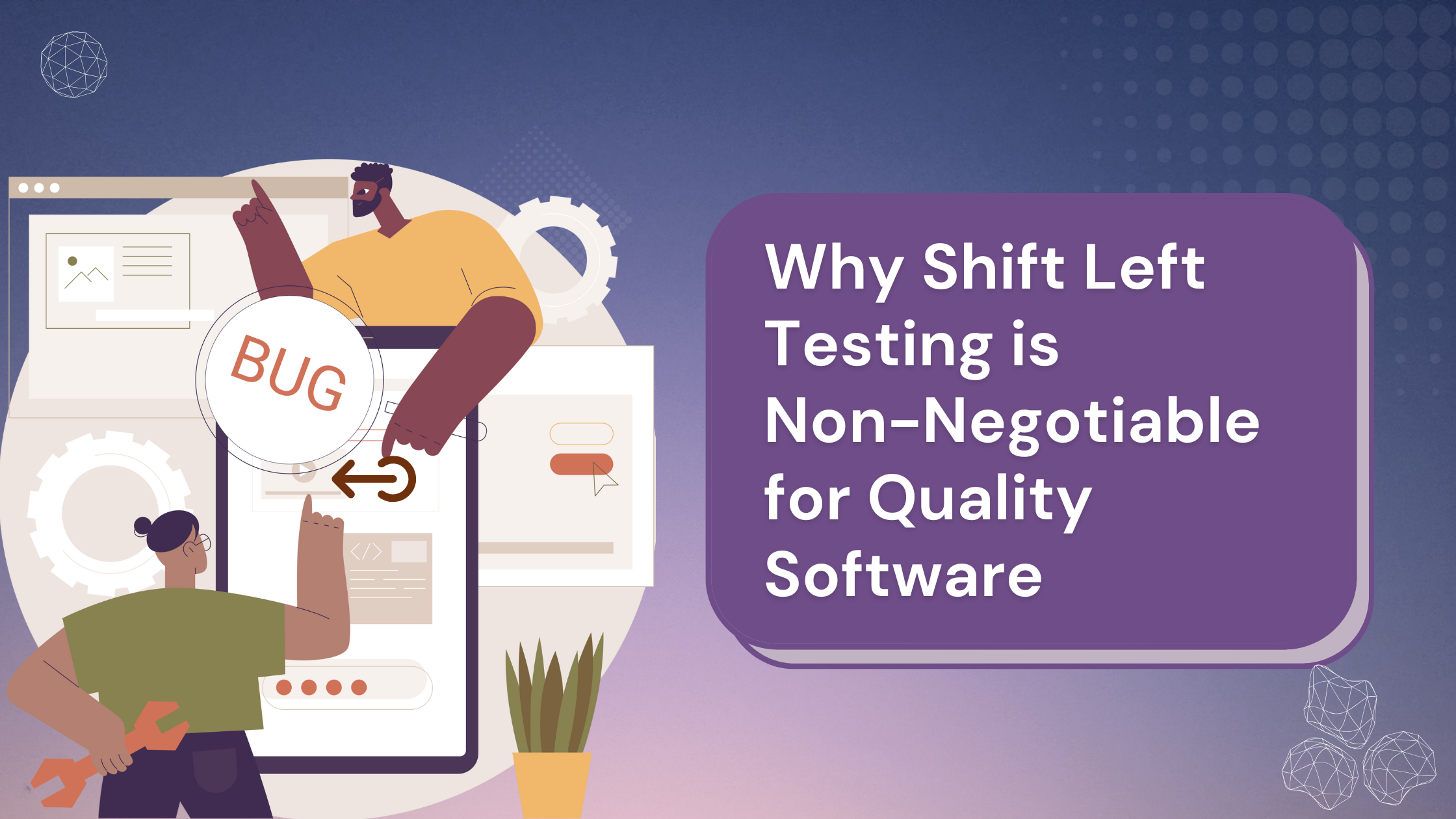Embracing the Future: Crafting a Winning Test Automation Strategy

Strong 8k brings an ultra-HD IPTV experience to your living room and your pocket.
Every time we learn new software or systems, there is a learning curve, and in testing it often pays off with great rewards. Most notably, test automation is quickly changing the way tests are performed and offers several tangible benefits, including strengthened processes, less use of resources, and top-quality software.
On the other hand, jumping into automating systems without a future strategy won’t guarantee results. Having a well-planned strategy is key so your releases run smoothly and your actions, be it building in-house resources or getting test automation help, are actually beneficial.
With such a plan, you can improve your product before customers get it, deciding on how to combine service and automation with steps that best benefit from manual testing.
What is a Test Automation Strategy?
A test automation strategy outlines the details of how your business plans and manages its use of automated testing. It is a part of your total testing strategy that defines what, why, and how you will use automation, as well as names the tools, resources, and metrics to use.
Following this document gives automation the best chance to contribute to achieving the overall goals and to boost quality and speed within the software project. It helps set up which tasks should be automated, the process to follow, and what technologies should be used, so the investments can be considered profitable and produce consistent test results.
The Perils of Proceeding Without a Strategy
If you do not have a plan for your test automation, it's like going on a journey without knowing where you are headed. Regardless of the good intentions, the process could be filled with struggles, inefficiency, and risk of failure. Here's what can go wrong:
1. Inability to Demonstrate Business Value
When automation is not clearly linked to business objectives, it could appear just as a means of using new technologies. If it is not clear how ROI or automation reaches business goals, it will be difficult to maintain support and budget for the project.
2. Lack of Vision and Direction
In automation projects, there may be difficulties or the need to make adjustments. Without an initial vision, it is easy to become confused by issues and stop or slow down the project.
4. Technology Efficiency Loss
Picking the wrong automation options for your scenario may result in your tests running slowly, being unstable, and taking up a lot of unnecessary time.
5. Unpreparedness for the "Testing Squeeze"
Even with agile methods, tests can still be done quickly. Without a plan to determine what to test and what not to test, teams often miss important areas, leading to problems.
6. Inadequate Test Coverage
Unplanned attempts at automation can bring about a test suite with unequal coverage, leaving major parts of the software unchecked.
7. Integration Hurdles
It is vital to use automation in the CI/CD pipelines to get feedback more quickly. Without a plan, the process can be tough and troublesome.
8. High Maintenance Overload
If tests are not organized, teams may have to waste more time dealing with errors than actually making new tests.
9. Demotivated Teams
If automation efforts are not organized, QA and development workers will be frustrated and not like to adopt it.
The Purpose and Benefits of a Robust Strategy
Having a well-planned test automation strategy benefits many areas. It mainly looks to provide data on possible issues, strengths, and functions, to achieve a dependable way of testing. It makes goals and plans clearer to everyone, makes it easier to talk about new technologies and ideas, and helps track how plans have been carried out. The benefits are manifold:
- Clear Plan of Action: Gives a well-ordered and productive plan for building automation.
- Faster Detection of Bugs: Quick and automated tests help catch bugs sooner, making fixing them easier and less expensive.
- Improved Collaboration: Properly setting out roles, duties, methods, and communication methods results in better teamwork among developers, testers, and other team members. Predicting the outcomes of automated tests helps build confidence.
- Shorter Time to Market: Swift feedback and quick regression testing allow organizations to release improved software more quickly and gain an advantage over rivals.
- Optimized Resource Allocation: This guide helps the team pick tests to automate and those to check by hand, using all resources efficiently.
Building Your Test Automation Strategy: Key Steps
Building a successful test automation strategy involves several crucial steps to ensure your efforts are effective and aligned with business goals. Consider these key pointers:
1. Define Clear Scope and Objectives
Begin by precisely identifying which test cases and functionalities are suitable for automation. Prioritize high-business-value scenarios, repetitive tasks, and critical regression tests. Set measurable objectives for your automation, such as desired test coverage, reduction in testing cycle times, or defect detection rates.
2. Conduct Thorough Risk Analysis
Assess the possible hazards connected to your automation project. This entails considering the team's learning curve, maintenance costs, integration difficulties, and tool limitations. Then, create plans to reduce these hazards that have been identified.
3. Select Appropriate Tools, Technology, and Approach
Choose the automation tools, frameworks, and technologies that best fit the architecture of your application, the experience of your team, and your budget. Explain your overall automation approach, such as keyword-driven, data-driven, or BDD. For complex environments or specific needs, use expert test automation services to guide framework development and tool selection.
4. Establish Robust Test Data Management
Strategize how test data will be generated, managed, stored, and refreshed for your automated tests. Ensure data privacy and integrity, and make sure that valid test data is readily available when needed.
5. Prepare and Manage the Test Environment
Set up a stable, reliable, and isolated test environment that closely mirrors your production setup. Document all environment configurations, access requirements, and maintenance schedules.
6. Integrate with CI/CD and DevSecOps Practices
Plan for the seamless integration of your automated tests into your Continuous Integration / Continuous Delivery (CI/CD) pipelines. Align your automation strategy with broader DevSecOps principles to enable early and continuous feedback throughout the development lifecycle.
7. Develop Execution, Analysis, and Maintenance Plans
Outline clear procedures for executing automated tests, analyzing the results, reporting defects effectively, and, crucially, maintaining the automated test suite to ensure its long-term viability and prevent test flakiness.
8. Implement Standardized Naming Conventions and Test Tagging
Adopt consistent naming conventions for your test scripts and implement a robust test tagging system. This will facilitate better organization, easier test identification, and targeted execution of specific test suites.
9. Foster a Culture of Continuous Review and Improvement
Consider your test automation approach a dynamic, living record. Review its efficacy with all stakeholders regularly, collect comments, and modify the approach to fit changing project needs, new technology, and knowledge acquired.
What Does a Test Automation Strategy Look Like?
Don't let format hold you back. A test automation plan doesn't have to be a 70-page book. It might be a dynamic document, a mind map, or a cooperative wiki page that changes with time. The emphasis should be on clearly stating objectives, strategies, and duties.
Concluding Thoughts
Adopting a test automation approach involves developing a mentality that values efficiency, quality, and teamwork rather than only using new tools. Planning takes initial effort, but this effort pays off by saving valuable time during sprints, improving long-term QA activities, and guaranteeing that your automation projects provide real business value.
Keep in mind that the aim is to emphasize your goals, communication, and how automation will benefit your company, people, and surroundings. A strong test automation service strategy built and carefully followed will open the door for invention, expansion, better-quality software, and finally, more consumer happiness.
Note: IndiBlogHub features both user-submitted and editorial content. We do not verify third-party contributions. Read our Disclaimer and Privacy Policyfor details.




